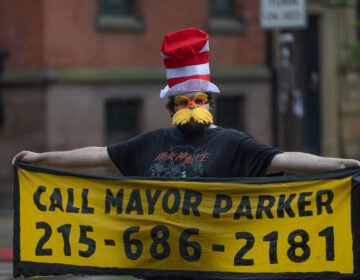School buyers use different tactics with surrounding communities
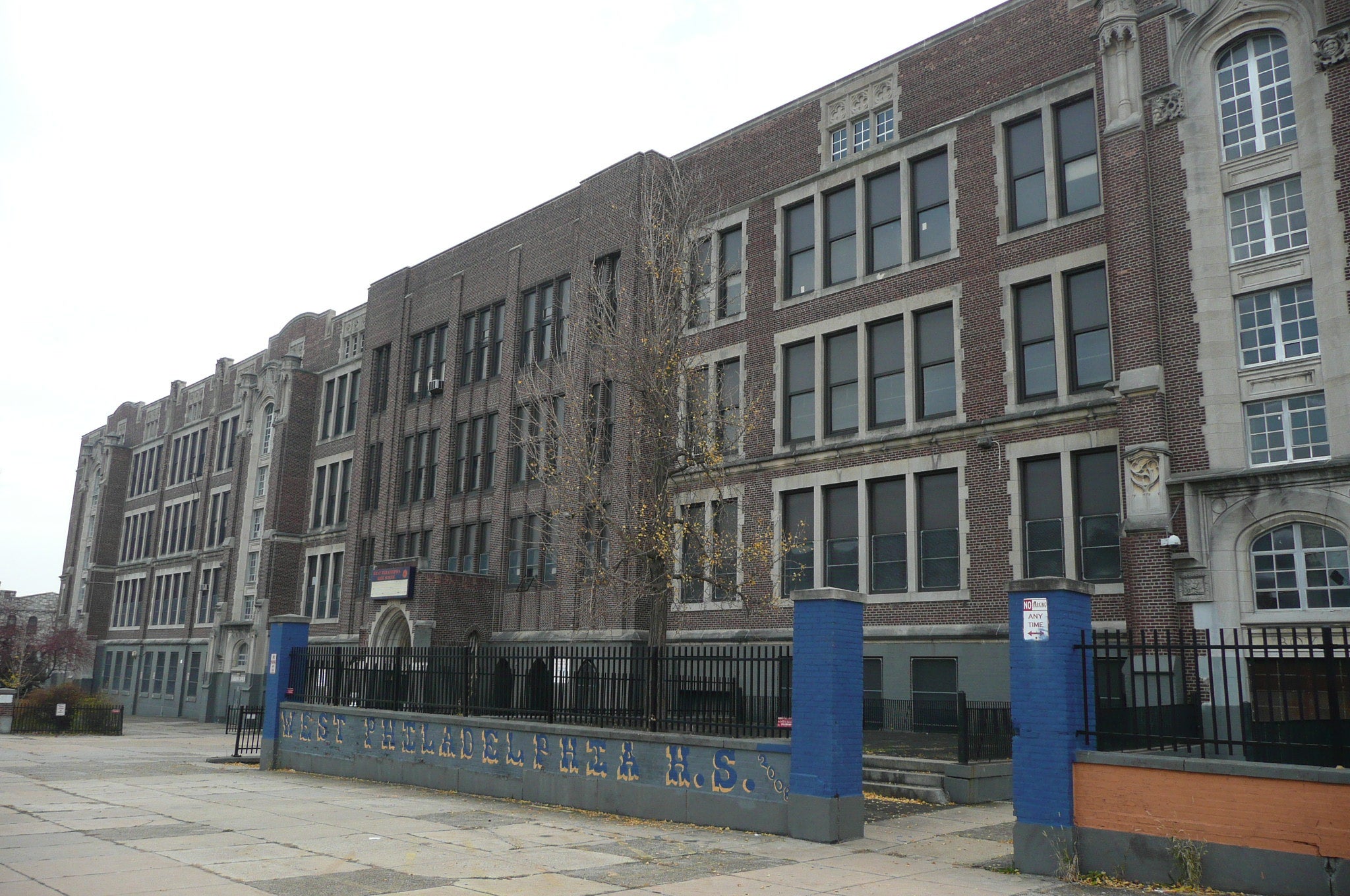
By Kate Hartman and Ben Griffiths
This article was created in partnership with Temple University’s capstone journalism course Philadelphia Neighborhoods. Coming Tuesday: How vacant school buildings affect surrounding communities.
The School Reform Commission adopted a new adaptive reuse policy in 2011 with the intention of streamlining the disposition of surplus properties. A first step was to sell off buildings that were already vacant before dozens more schools were closed over the next several years.The School District of Philadelphia began closing, consolidating and selling off schools in conjunction with its facilities master planning process in 2010. This plan was put into motion in the face of the estimated 70,000 empty seats in school buildings around Philadelphia.
The district put 12 properties on the market in the beginning of the year. Currently, four of those properties have been approved for sale.
The John Paul Jones Middle School Annex in Kensington is being sold to Elm City Capital and Richmond Mills LP for $250,000. The Simon Muhr Elementary School in North Philadelphia is being sold to Philadelphia Suburban Development Corp. for $150,000. The Rudolph S. Walton Elementary School in North Philadelphia is being sold to KIPP Philadelphia Charter School and MIS Capital LLC for $320,000, and the old West Philadelphia High School is being sold to Strong Place Partners for $6 million.
With dozens of more schools targeted to close, the sale of these properties is a win for the district, which hopes to see $11 million in revenue from the sale of all their properties. However, these approved buyers mean dashed dreams for small interested parties like Anthony Johnson, who hoped to attain Walton for his local charity, Dream Field Academy.
Johnson grew up just six blocks from Walton in Strawberry Mansion. The building, located at 2601-2631 N. 28th St., is the first school he attended.
“Attending R.S Walton Elementary School was one of the greatest joys of my life,” said Johnson. “Who I am is a direct result of those wonderful teachers.”
After college, Johnson returned to Walton to volunteer his time mentoring children.
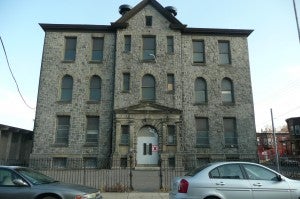
The Rudolph S. Walton Elementary building has been approved for sale to KIPP Philadelphia Charter Schools.
Walton was closed in 2003 due to the age of the building. The property became the temporary home for displaced elementary students from the Commodore John Barry School following a “boiler implosion,” but was closed again by 2008.
Johnson hated to see his beloved school become a local dumping ground, so he formulated a plan to repurpose the structure for positive use in the community.
“It went from a thriving place of education, love and support to a desolate wasteland,” said Johnson. “That’s when I started reaching out to the school district.”
Johnson began his organization, the Dream Field Academy in 1995. It acquired charity status in 2006.
The charity provides tutoring and mentor outreach programs aimed at connecting with the city’s youth. Johnson balances academic tutoring programs with lessons in non-traditional sports like rugby and fencing.
Johnson had hoped the district would donate Walton to the Dream Field Academy. He said he reached out to the District but was continually told that the building was not for sale.
That was not true. Walton was put on the market by Newmark Grubb Knight Frank in the beginning of 2012. KIPP Philadelphia Charter School was approved to purchase the property on Nov. 15.
“We brought that opportunity to KIPP and they went for it,” said Steve Gendler, managing director at Newmark Grubb Knight Frank and listing broker for Walton. “They want to have a North Philadelphia campus. They feel like that is a very needy population. A lot of their kids already come from there. They want to be the center of that community education wise.”
KIPP seems like an obvious candidate for the purchase of this nationally registered historic building. The charter school leases another building at 26th and Cumberland streets for their KIPP DuBois Collegiate Academy. The purchase of Walton will solidify KIPP’s place within the neighborhood.
“We were interested in the Walton building because it is in the heart of North Philadelphia, and we are committed to serving this community,” said Natalie Wiltshire, chief operating officer at KIPP. “The Walton building has been closed for several years, so we believe this is a good opportunity to become a fixture in North Philadelphia and further build the relationship with the community by permanently housing one of our schools in this location.”
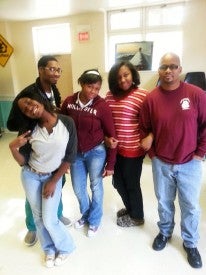
Community activist Anthony Johnson tirelessly campaigned the school district to donate Walton Elementary to his charity, Dream Field Academy.
KIPP said it hopes to open a school in the Walton building starting in the summer of 2014.
The fact of the matter is that the district and the brokers charged with selling these surplus properties don’t want to unload them to just anyone who makes a bid. There is a definite preference to buyers who have strong financial backing and a track record for sticking to a timeline. While a donation to a positive community organization like the Dream Field Academy is a nice idea, it just isn’t realistic.
“The school district is not allowed to give buildings away. They can’t do that,” said Gendler. “They are part of the public domain right now. There is a very specific process that any public entity whether it’s the City of Philadelphia or the School District has to comply with to actually sell a building or a piece of land.”
Gendler admitted that he doesn’t specifically remember hearing about Johnson’s plan for Walton.
“What’s different about selling these properties is that first the pre-qualification, which is called the RFQ response and that’s a request for qualifications, and the RFP response, the request for proposals, [were due] at certain specific times. One was in the spring and one was Aug. 7,” said Gendler. “I did get a number of calls after Aug. 7 of people wanting to jump into the mix but they missed the deadline, and that’s different than a normal process where if you haven’t signed anybody up, and somebody comes with an offer you can bring them right in to the process.”
Johnson is frustrated with that approach. He said he thinks the district has been disingenuous.
“The run-around, the foolishness, once again shows me that unfortunately the school district is not serious about our kids and not serious about our communities,” said Johnson.
Gendler said that KIPP intends to hold conversations with the community about what it plans to do in the building. The meetings haven’t been scheduled yet.
“The dream of having Walton is done, but not the dream of having my own building someday and being able to provide the services that our kids need,” said Johnson.
In this particular case, the hopes of a community member and the approved buyer’s plans don’t align, but that hasn’t been the case for every property.
The John Paul Jones School Annex, located at 3250 Amber St., has been approved for purchase by Elm City Capital and Richmond Mills LP. The property is located adjacent to The Loom, two former factory buildings bustling with artists in living/working lofts. Ask the artists what they want the vacant school building to be repurposed for and they will say more lofts.
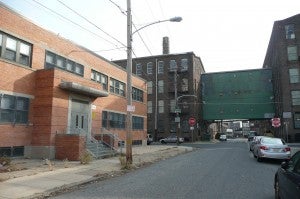
Elm City Capital has been approved to purchase the John Paul Jones Annex located next to The Loom.
“I don’t agree with the closing of schools because education is very important but if there is no other alternative, I think it should be artists rather than a corporate business because artists need that space. There’s not that many of them,” said Hayes Mcleod, an artist who currently rents out space in The Loom.
The Loom is currently dealing with 100 percent capacity, so additional spaces make sense to the community members. The amazing thing about this property is when Elm City Capital is asked about the space, additional artist lofts make perfect sense to them too.
“More than likely it’s going to be an extension of The Loom. I think that’s the best use for continuing to build that community,” said Brian Murray, founder of Elm City Capital. “We definitely have the demand and the interest for additional space.”
Elm City Capital has also toyed with the idea of creating a kitchen incubator for food entrepreneurs. There are only a few facilities for that purpose in Philadelphia, so it could also be a good use of the space. The company’s primary goal is strengthening the existing community and adding to what’s already working in Port Richmond.
“Our goal is to make it a community anchor as Frankford Avenue continues to develop,” said Murray. “We had a real interest in building our own community, building our own outreach into this particular neighborhood. The way to do that was to continue to attract the economy into this area, so it made perfect sense.”
In the case of John Paul, the ideas of the buyer and the community coincide. Two different approaches are being employed with John Paul and Walton. The difference is when the community is being brought into the conversation. Elm City is trying to appease the community on the front end and KIPP is planning to hold a conversation with the neighborhood down the line.
Either way the voice of the community is key in the process of selling these closed schools because it is the people in the neighborhood who will have to live with the developments day to day.
“I believe that the reuse of these old buildings is vital to the health of these neighborhoods,” said Gendler. “In every project we’ve done, once a lot of money is put into a building and it becomes used by 800 or 900 families, which could be the case with the Walton building, that brings people to the neighborhoods. It can be game changers for neighborhoods.”
The School District of Philadelphia did not respond to requests for comment about these issues.
fa1203planphillyfinalenterprisemcleod from Philadelphia Neighborhoods1 on Vimeo.
For more information about these issues, visit http://philadelphianeighborhoods.com/2012/12/06/plan-philly-vacant-school-buildings-impact-surrounding-communities/
WHYY is your source for fact-based, in-depth journalism and information. As a nonprofit organization, we rely on financial support from readers like you. Please give today.




